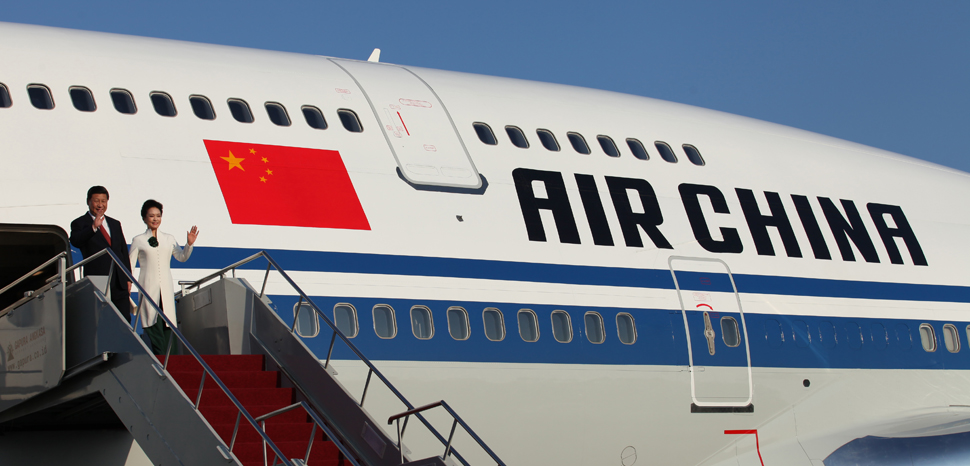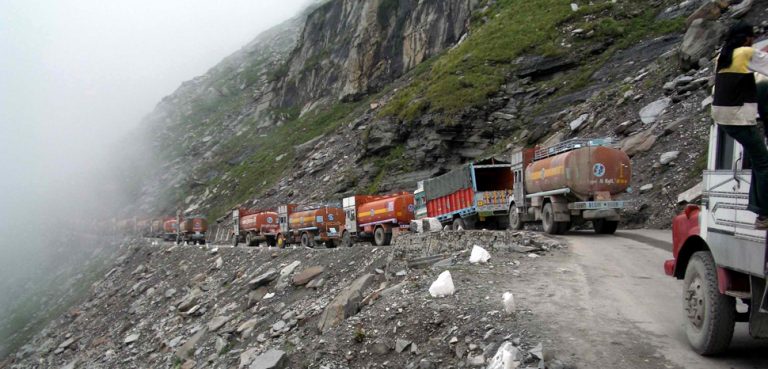A half a year has passed since the 19th Party Congress in October 2017 and the removal of term limits for the presidency in China. The change returns China to the period in which there is no transparency in leadership transition and power is concentrated in the hands of an individual, in this case President Xi Jinping. The rationale for this transformative decision that dismantled Deng Xiaoping’s deliberate act to move from one-man rule towards consensus-based rule has been that China needs leadership continuity.
For the Chinese leadership, the answer that is seldom given to the question as to “why we need leadership continuity” is rooted in two tandem pressures, the potential in what Graham Allison calls the Thucydides Trap and the second is the so-called middle-income trap, both of which will become increasingly possible over the next 10 years without a strong commitment to reform.
The former according to Allison refers to when a rising power causes fear in an established power which escalates toward war. More specifically, Thucydides wrote: “What made war inevitable was the growth of Athenian power and the fear which this caused in Sparta” . The latter according the IMF is the phenomenon of hitherto rapidly growing economies stagnating at middle-income levels and failing to graduate into the ranks of high-income countries.
The first is a geopolitical problem while the latter is a domestic problem, but they are intertwined. The leadership in Zhongnanhai is clairvoyant in that, in the absence of solving both simultaneously, one or the other will destabilize the long cherished socio-economic stability that the CCP has built its ruling legitimacy on since it began its initial period of reform and opening up under Deng Xiaoping beginning in 1978.
Structural Challenges and the Middle-Income Trap
While the first phase of China’s reform and opening was characterized by ad hoc, pragmatic policies or as Deng Xiaoping said crossing the river by feeling the stones/ 摸着石头过河, the “Reform and Opening 2.0” being implemented and executed by the now termless President Xi is deliberately deviating from a policy approach best characterized as improvising to one that is a comprehensive plan meant to guide the second phase of reform and opening in a scientific and rational manner.
This has been calculated. During the first 40 years of reform and opening up, all the easy aspects of socio-economic development were organically and unsystematically implemented. One-way investment through ODA and massive injections of FDI contributed to the development of China being the world’s production and manufacturing epicenter. The same has been true for one-way trade, in which China ranked 143th in 2015 allowing China to growth at unprecedented rates for much of the past 40 years. China’s populations in its vast hinterlands have been mobilized as cheap labor in what the world now calls the global manufacturing hub.
Today, China under the CCP faces structural constraints at many levels that will complicate the ‘Reform and Opening Up 2.0’ process and path toward avoiding the middle-income trap. These include the structural legacy of the one-child policy that helped control China’s burgeoning population upon its inception. As a consequence of this policy decision, China faces the so-called 4-2-1 problem in which one child takes care of two parents and four grandparents. The financial burden is of this relationship will stunt consumption for tens of millions Chinese citizens at a time when the central government is attempting to transform its economy into a domestic consumption-based economy that has a large service sector. This demographic burden will become more pronounced in the next 10 years as an estimated 350 million Chinese move into the ranks of senior citizens without the supporting social welfare systems to manage their living and medical costs.
This is where a second challenge lies for the Chinese government. Currently the total GDP is represented by 40% of the GDP being generated by the manufacturing sector and 51.6% of GDP being generated by the services sector. This is well below South Korea at 60%, Japan at 70% and other East Asian economies in the service sector. Saliently, the quality and scale of service sector jobs being created is also dubious.
More concretely, whereas service sector jobs in the above listed economies are characterized as mid-to-high income white collar jobs, the services sector jobs being created in China are mostly low paying jobs that do not provide sufficient income to live in China’s first tier cities of Beijing, Shanghai, Nanjing, Guangzhou, and Shenzhen.
Reforms needed to ensure that China avoids the middle-income trap will negatively affect many stakeholders in the existing economic system. While some of the hard work to pursue reform has been done through the targeted corruption campaign begun under President Xi, the decision to remove term limits was taken to ensure that the 2nd term of President Xi’s rule was not characterized by ineffectual policy owing to political posturing of those in the leadership whom have presidential aspirations.
To resolve the multitude of domestic contradictions and challenges in the Chinese economy during this sensitive 10-year window, disruptive reforms will be required. Included in the plethora of needed changes are bolstering rule of law, replacing inefficient heavy industry with high-paid service sector jobs, enforcing IPR, reforming residency permits and managing population decline in such a manner that it doesn’t affect socio-economic stability in a meaningful way.
While not without domestic critics, there is near unanimous consensus in the CCP under President Xi that there is little to room to maneuver to tackle these structural issues successfully without a continued stable, long-term leader.
For the Party, the cost of ineffectual leadership could weaken its political legitimacy significantly as the Faustian bargain of socio-economic development in exchange for political rights would no longer be viable. More crucially though, without overcoming these structural issues the twin goals of realizing “socialist modernization” by 2035 and to “have built a modern socialist country that is strong, prosperous, democratic, culturally advanced, and harmonious” by 2049, China will likely find itself in the middle-income trap and result in the Party searching for a new source of legitimacy.
In the post 1989 Tiananmen Incident period, the lodestone of nationalism and humiliation provided the social cohesive to maintain social stability until the Party started to translate policy into economic growth that lifted hundreds of millions from poverty. In a middle-income trapped China, it is unclear what social adhesive could be deployed by the Party to maintain social stability and political leadership; however, should the middle-income trap by US-inflicted, it would certainly resonate with past humiliation narratives.
Geopolitical Rivalry and a Cold War 2.0
The trajectory of US-China relations faces many immediate and long-term challenges. Different understandings about international law play out in the South China Sea (SCS) and East China Sea (ECS), proactive lawfare to erode sovereignty claims of disputed territory, the construction and militarization of illegal islands in the SCS, deepening mistrust and concerns over long term intentions of both the US and China in the region and intensifying trade friction have shifted the relatively cooperative relationship in the first period of reform and opening-up to one that is entering a vicious cycle of worsening relations.
Policy makers in China see they next ten years as a period in which the US and China resolve their bilateral issues in some of grand bargain in which they mutually adopt concessions to avoid a Cold War 2.0.
Tensions stem from a hyper-preoccupation in Beijing with US-led containment, as evidenced by the resurrection of the Quadrilateral Security Dialogue (QSD), the advent of the Indo-Pacific region, the positioning of military bases around China’s periphery, and perceived aggressive trade policy under the Trump administration, but also China-exclusive trade pacts such as the CPTPP or TPP under the Obama Administration.
China views the manifestation of the QSD, the Indo-Pacific concept, and a trade war as strategic initiatives to contain China, as attacks on some of its core interests such as territory in the SCS, direct assaults on its economy to prevent China from realizing its 2025 “Made in China” economic strategy and an overt effort to slow or make stagnant Chinese socio-economic development. They also see each of these initiatives to collectively be efforts to balance if not derail President Xi’s and the CCP’s flagship initiative, the BRI.
Resolving these issues will not be easy. The US and the majority of nations in and out of the region sees the rejection of the Permanent Court of Arbitration (PAC) July 12th, 2016 decision on China’s sovereignty claims in the SCS as an overt reject of the current international legal system and institutions that have facilitated China’s socio-economic development miracle.
The building and militarization of islands in the SCS, despite promises by President Xi to President Obama, have also fractured confidence in China’s long-term aspirations in the region. Viewed alongside the lawfare tactics to erode Japanese sovereignty claims in the ECS, the US, its allies and long-standing partners such as Australia, Canada, the UK, France and others have deepening concerns about the trajectory and nature of China’s vision for itself in the region and globally.
Concerns over trade disparities between the US and China are not just a feature of the Trump presidency either. As early as the Bush Jr. Administration, when the initial interest was shown in the IPR focused TPP meant to protect participating states from intellectual property theft. Forced technology transfers, continued IPR violations and trade barriers are all seen as unfair trade practices that have allowed China to extract benefits from trade partners to construct and increasingly assertive and revisionist state.
Here is where the quandary lies. Both states view each other with deepening suspicion and mistrust. Finding a path to mitigating some or all their concerns will require diplomacy and concessions on both sides. For leaders in Beijing who have spent the better part of 30 years stressing a narrative of a Century of Humiliation, walking back from nationalist projects such as islands building in the SCS, economically coercive tactics to bring Taiwan to the reunification table and a containment narrative will be a daunting task.
The US faces awkward realities as well. It is natural for a country with China’s economic heft, historical cultural continuity and its experience with colonialization to try to maximize its power in its own backyard. This will require the US to rethink its position in the region and how it’s should conduct itself when it has a peer or peer-rival in the region.
For policy makers in Beijing, without unraveling this geopolitical gordian knot over the next ten years there is a high likelihood that US-China relations will spiral into a Cold War 2.0 that will have profoundly negatively connotations for bilateral relations but also globally.
At the bilateral level, a Cold War 2.0 may result in Beijing shifting from a minimum nuclear strategic deterrent towards an acceleration in both the numbers and capabilities of their current nuclear stockpile as they feel less and less confident in their existing strategy to be sufficient to deter the US. This would take valuable resources away from China’s socio-economic development and possibility cement not only the Thucydides’ Trap concerns in Zhongnanhai but also the middle-income trap.
At a global level, a Cold War 2.0 would complicate cooperation on global issues such as climate change, weapons proliferation, denuclearization, poverty alleviation and other forms of non-traditional security cooperation as both sides would be see cooperation through a zero-sum calculation in which cooperation may weaken their position vis-à-vis each other in their bilateral relationship.
‘America First’ Politics, Xi Jinping Thought and the Future of US-China Relations
The US was primed to take a harder line on China whichever political party came into power in the wake of the November 2016 election. Notwithstanding, America First politics has injected an unnecessary level of unpredictability and friction into a relationship that was already structurally strained. Raising anxieties in Beijing through direct attacks its economic reforms and ill-considered tariffs will not only harm China but also alliance partners as their economies are integrated through the East Asian production network. Importantly, it has the potential to accelerate the vicious cycle towards a Cold War 2.0 that will shape the 21st century’s geopolitical landscape in such a way that it will be characterized by rivalry rather than cooperation.
Xi Jinping Thought (习近平思想) will also shape future of US-China relations if realized. Built on the two pillars of achieving the ‘Chinese dream’ and comprehensively deepening reform and upholding the mass line, Xi’s own “China First” politics incarnated in Xi Jinping Thought will directly challenge the US’s position in the region, its alliances, and the international system the US helped build in the post WW2 period. Not altering this lofty goal may have unintentionally planted the seeds of China’s fears over a Cold War 2.0. Avoiding China’s twin traps will require compromise, domestic stability, and constructive relations with the US.
The opinions, beliefs, and viewpoints expressed by the authors are theirs alone and don’t reflect any official position of Geopoliticalmonitor.com.




